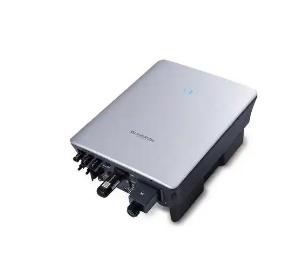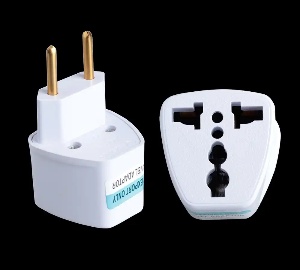Electronic Components Supplier | Transformers, Inductors, Inverters
Are you planning an electrical project that requires a transformer? For decades, oil-filled transformers were the standard. However, today, dry type transformers are becoming the preferred choice for many applications. Why? They are safer, more environmentally friendly, and require less maintenance. But with several types available, choosing the right one can be challenging.
This guide will explain the main dry type transformer types. We will explore their unique features, benefits, and ideal use cases. By the end, you will clearly understand which transformer best fits your needs. Let’s begin.

Dry type transformer use air or solid insulation materials to cool the iron core and coils
1.What is a Dry Type Transformer?
First, let’s define a dry type transformer. Unlike liquid-filled transformers, dry type transformers use air or solid insulation to cool the core and coils. Consequently, they do not use flammable or toxic oils. This makes them much safer for people and the environment.
Additionally, these transformers are perfect for indoor installations. They are commonly found in commercial buildings, hospitals, schools, and industrial plants. Their key advantages include high fire safety, low maintenance, and excellent reliability.
1.1. Key Advantages of Dry Type Transformer
Why should you consider a dry type transformer? Here are their main benefits:
- Enhanced Safety: No flammable liquids are used. Therefore, the risk of fire and explosion is significantly reduced.
- Eco-Friendly: They contain no oil, which means no risk of soil or water contamination from leaks.
- Low Maintenance: You do not need to monitor liquid levels or quality. This leads to lower long-term costs.
- Easy Installation: They are lighter and can be placed closer to the load, even in multi-story buildings.
- Excellent Reliability: With robust construction, they offer a long service life with minimal downtime.
2.The Main Dry Type Transformer Types
Now, let’s dive into the core of our discussion. There are three primary types of dry type transformers based on their insulation and cooling methods.
2.1. VPI (Vacuum Pressure Impregnated) Transformer
VPI transformers are a popular and cost-effective choice for standard applications.
- Construction Process: The transformer windings are first dipped in a special insulating varnish. Then, they are placed inside a tank where a vacuum is created. Next, the varnish is introduced under pressure. This ensures the varnish deeply penetrates every part of the winding, creating a strong, moisture-resistant seal.
- Benefits: This process results in a transformer that is highly resistant to moisture, chemicals, and contaminants. It is very durable and can handle tough environments well.
- Common Applications: VPI transformers are widely used in industrial facilities, commercial complexes, and water treatment plants.
2.2. VPE (Vacuum Pressure Encapsulated) Transformer
VPE transformers represent a technological advancement over the VPI type. They are designed for even harsher conditions.
- Construction Process: The VPE process is similar but uses epoxy resin instead of varnish. The windings are encapsulated in a thick, solid layer of epoxy under vacuum and pressure. This creates a “totally enclosed” transformer.
- Benefits: VPE transformers offer superior protection. They are virtually impervious to moisture, dust, salt spray, and corrosive gases. This makes them extremely reliable in severe environments.
- Common Applications: They are ideal for offshore platforms, marine applications, mining operations, and coastal areas with high salt content in the air.

Resin cast transformer are a high-quality choice for the most demanding and sensitive environments
2.3. Cast Resin Transformer
Cast resin transformers are the premium choice for the most demanding and sensitive environments. They are known for their excellent performance and visual appeal.
- Construction Process: In this type, the core and windings are completely cast in a solid epoxy resin within a mold. This creates a smooth, seamless block that fully protects the internal components.
- Benefits: Cast resin transformers are non-hygroscopic, meaning they do not absorb moisture at all. They have high short-circuit strength, excellent fire safety characteristics (self-extinguishing), and are very quiet during operation. Their enclosed design also makes them easy to clean.
- Common Applications: You will find them in high-rise buildings, hospitals, data centers, tunnels, subway systems, and any location where human safety and reliability are paramount.
In summary, choosing the right dry type transformer is crucial for your project’s safety, efficiency, and cost. VPI transformers are great for general industrial use. VPE transformers excel in harsh, corrosive settings. Finally, cast resin transformers are the top-tier solution for critical, sensitive, and public spaces.
As industries move towards greener and safer technologies, understanding these dry type transformer types is the first step to making an informed decision. For your next project, consider the environment and your specific needs to select the perfect transformer.
Luoyang Datang Energy Technology Co., Ltd. is a high-tech enterprise integrating R&D, manufacturing and supply of power equipment such as transformers, new energy components, distribution cabinets and inverters. With technological innovation as the core, we focus on creating high-reliability and high-performance power solutions to serve global customers. With a strict quality control system and international standard certification, we continue to output excellent products and enable customers to build safe and stable power systems.







